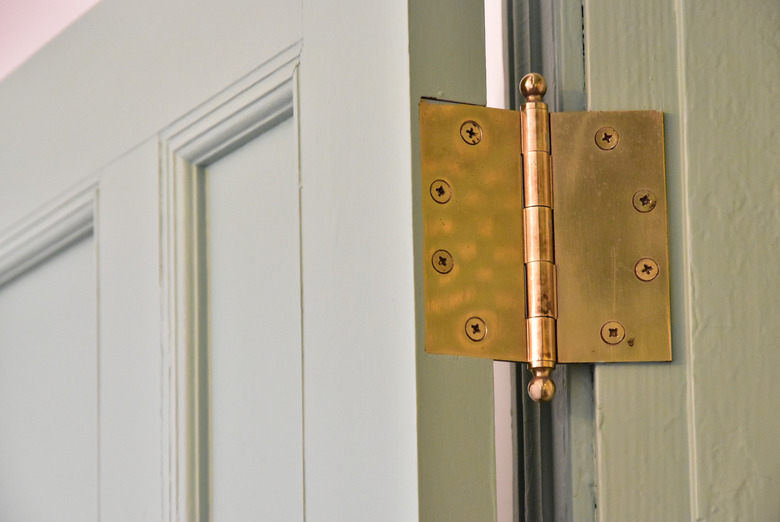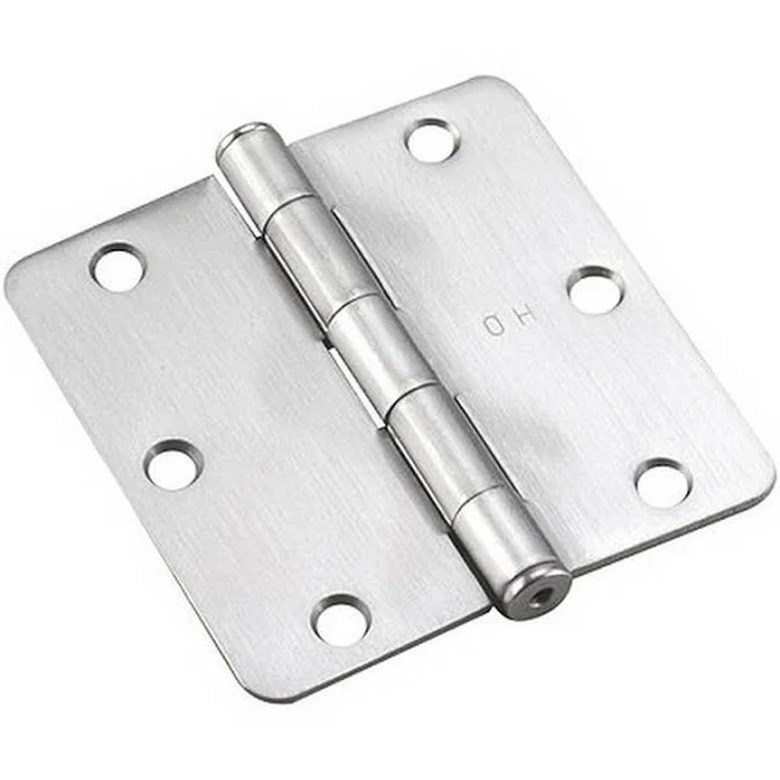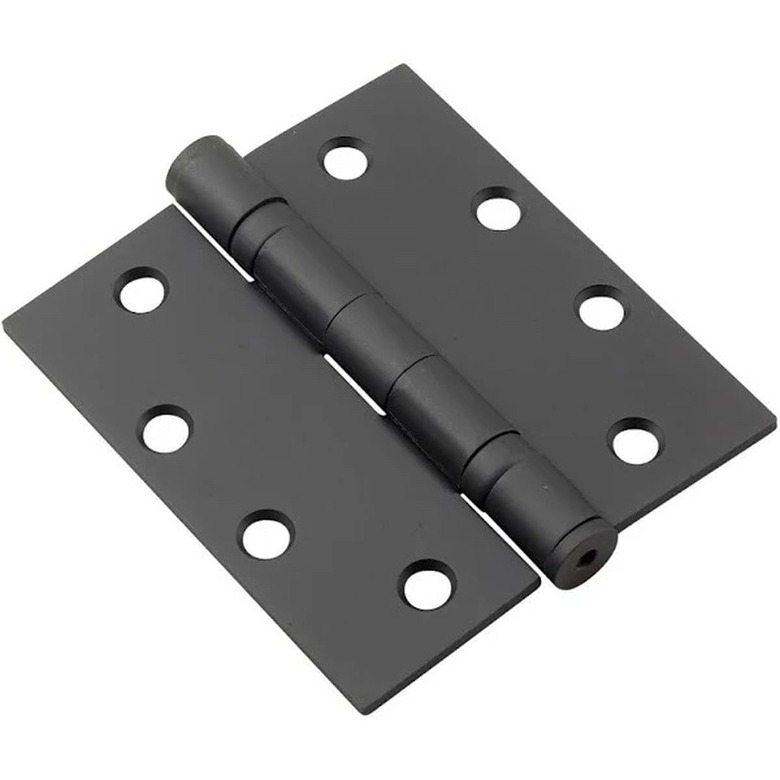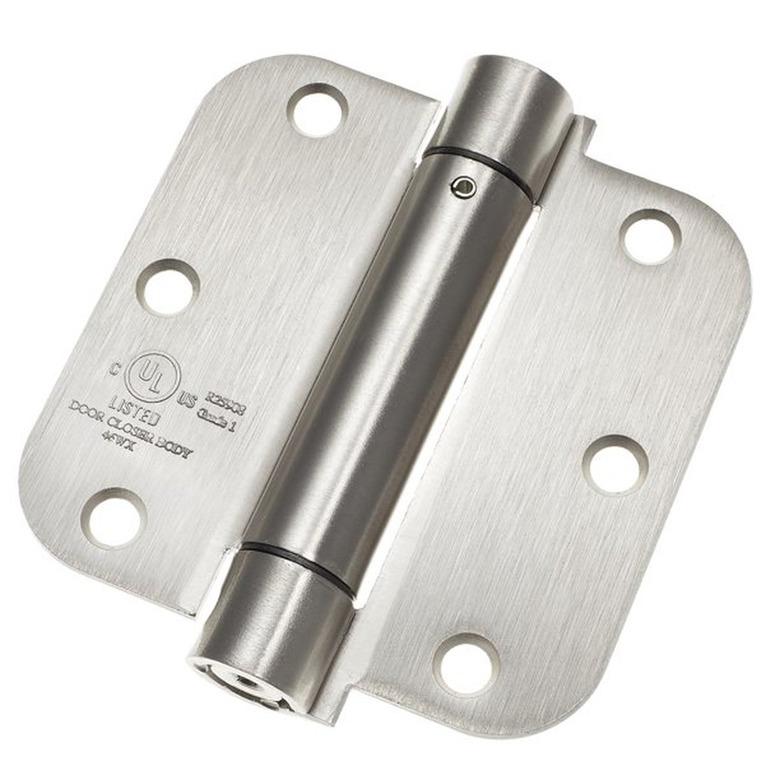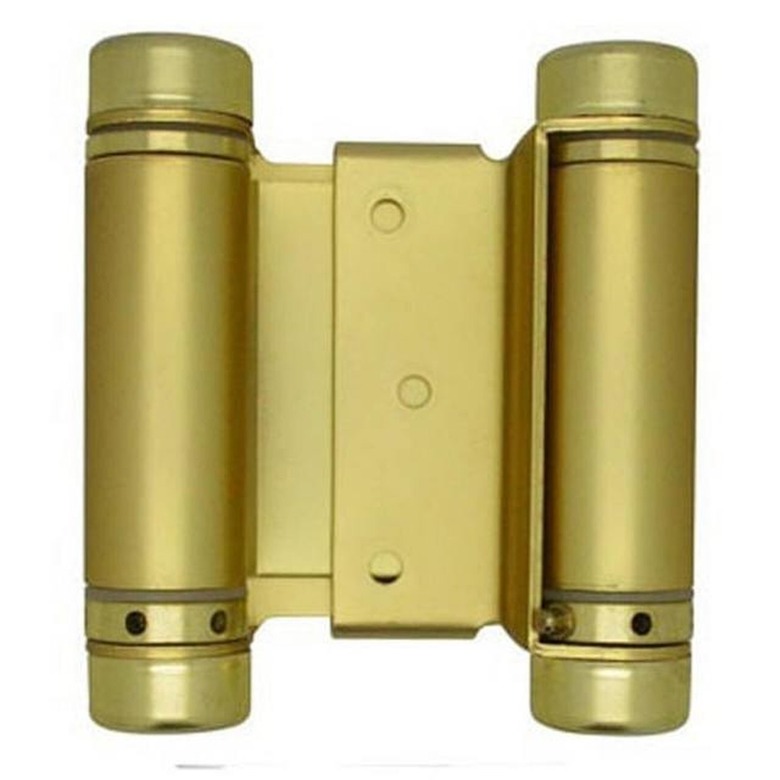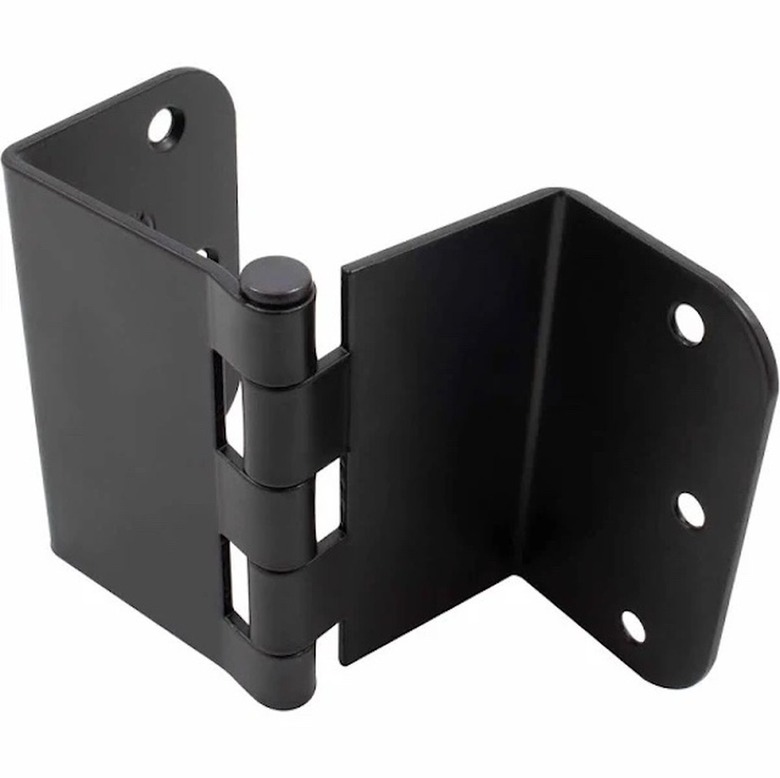The 5 Types Of Door Hinges You Should Know
We may receive a commission on purchases made from links.
If you're planning to replace any of the doors in your home — whether it's the front door or a bedroom door — you've probably put a lot of thought into what you want for the composition and style. But all of the different types of door hinges you could use are worth equal consideration, as these vary in design and function too.
In an older home, check the existing hinges for good examples of what's working well, as someone specifically chose these based on the size and weight of the doors already in your home. If an old hinge broke, it's also a good example of where your doors could use an upgrade to a set of heavier-duty hinges.
1. Standard Butt Hinges
1. Standard Butt Hinges
You're likely familiar with (or at least you've likely seen) the butt hinge — one of the most common types of hinges — which is also sometimes called a mortise hinge. This has been used on interior and exterior doors for generations (as well as cabinet doors). It has two equally sized flat plates, or hinge leaves, that serve as a pivot point around the cylinder between them. In order to be called a butt hinge, the leaves fold up against one another if you close the hinge as opposed to similar hinges with offset leaves.
These types of hinges are often used for relatively lightweight interior and exterior doors. The most common butt hinge, sometimes called a plain-bearing hinge, has a removable central pin. Taking the pin out separates the halves of the hinges, as the looped parts through which the pin goes, called knuckles, are attached to each leaf. By removing the hinge pines, the door can be removed without taking the screws out of the hinges, which makes it fairly easy to remove a door to move heavy furniture through the entrance as needed.
2. Ball Bearing Hinges
2. Ball Bearing Hinges
A ball bearing hinge looks a lot like a butt hinge (and is sometimes even considered a type of butt hinge), but the main difference is that it has lubricated bearings inside the barrel or knuckle area that are well suited for heavier or wider doors. The bearings are designed to last a long time and to make it easy to open and close the door, which makes them a good choice for heavy exterior doors that get a lot of use.
Tip
Ball bearing hinges are generally quieter than standard butt hinges, so they can be an excellent choice for those who want to dampen the sound of a noisy entry door.
3. Self-Closing Spring Hinges
3. Self-Closing Spring Hinges
Similar to the butt hinge and ball bearing, a self-closing spring hinge has two matching leaves, but they have a spring between them rather than the knuckle-and-pin design. The spring automatically moves the door into a closed position, so it comes in handy for storm doors, screen doors, or doors leading from the garage directly into the house. Usually if a spring hinge is used, there is only one installed (with standard butt hinges used alongside it). The spring hinge will replace either the top or bottom standard butt hinge on a door.
A spring hinge has a setscrew for increasing or decreasing the spring tension. All you need to do to tighten or loosen it is to use a hex key (Allen wrench). The screw may be at the top or bottom of the barrel hinges, and there may be a locking pin that must be pulled from the side of the barrel to allow for setscrew adjustments.
Tightening the setscrew adds tension for a quicker, harder close against the door frame, while loosening it releases tension. Certain versions of spring hinges are sometimes classified among other types of hinges, such as the cafe hinge.
4. Cafe or Saloon Hinges
4. Cafe or Saloon Hinges
A cafe or saloon hinge allows a door to swing back into place after pushing it, whether you're entering or exiting the room. Many cafe hinges are actually double-action spring hinges, with the double part referring to the hinge's ability to allow the door to swing open into or away from a room.
Cafe hinges are useful on interior doors where the door might need to be opened while your hands are full (like a dining room or kitchen entry). They're common on doors leading from restaurant kitchens out into the dining areas, but if your residential kitchen has a door, cafe hinges are a great option. Like self-closing spring hinges, a double-acting or double-action spring hinge eventually closes the door. The speed at which it does so is adjusted by tightening or loosening the setscrew that controls tension. For any door that swings in both directions, all the hinges have to be double-action spring hinges in order to achieve the desired swinging and closing functionality.
5. Offset Hinges for More Space
5. Offset Hinges for More Space
If you've ever tried to move a large piece of furniture through a doorway and realized the door itself was an obstacle taking up some of the available space, you'll appreciate the value of an offset hinge. Offset hinges allow the door to open farther and move out of the way, providing the full doorway width as open space. This also comes in handy in accessible homes, as the edge of the door won't be in the way when a wheelchair or walker passes through the doorway. The average residential offset hinge works well on interior doors, while commercial-grade offset hinges are heavier duty and durable enough for heavy exterior doors.
How to Choose the Right Door Hinges
How to Choose the Right Door Hinges
Most hinges are relatively simple, but decorative hinges are available from specialty retailers in a variety of metals like stainless steel, solid brass, or bronze. Standard butt hinges with embossed or debossed vines, swirls, or even art-deco designs come in handy when replacing antique hinges or when trying to maintain a specific aesthetic in the room. Even specialty styles, such as strap hinges, might work for some scenarios, such as recreating a rustic barn door look on a garage door.
But, if you're just looking for something basic, here are a few things to keep in mind when it comes to door hinges:
- Standard butt hinges do the trick for most doors in the average home and are what most homeowners use for a simple home improvement project.
- A self-closing spring hinge is a nice option on a screen door, but if you have dogs or cats, it may not be the best choice, as they'll easily escape if the door doesn't fully close.
- Choose ball bearing hinges for any excessively large or heavy doors.
- For exterior doors, always opt for durability and weather resistance. The heavier duty the hinge, the greater the chance it will hold up over time.
